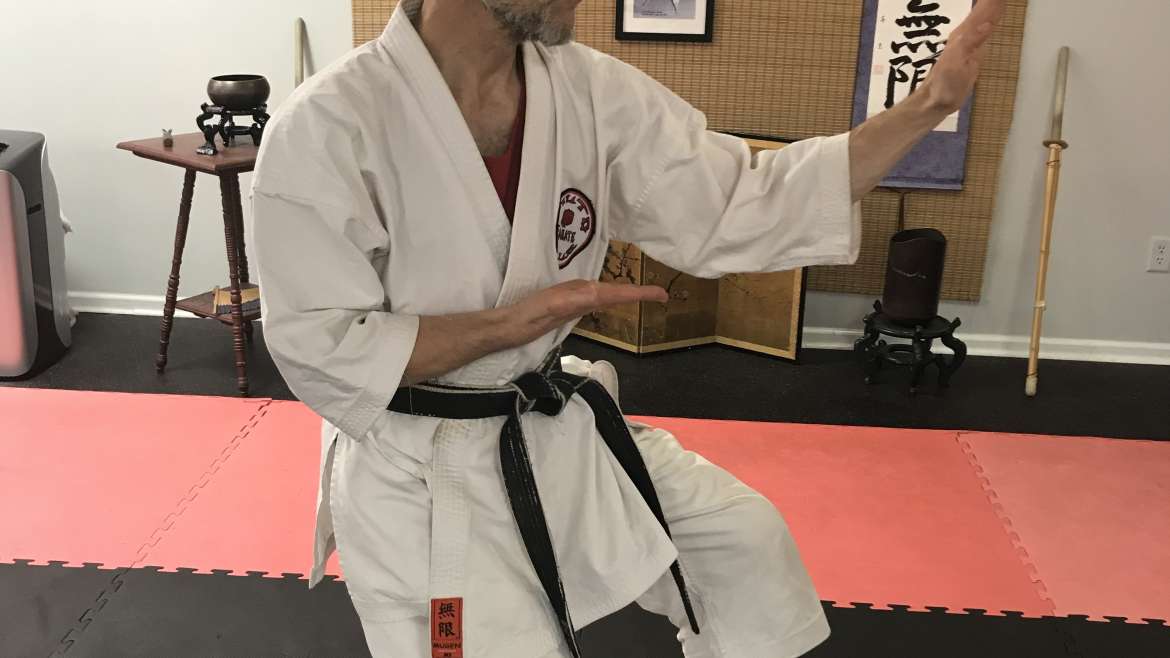
Tai Saba ki
Tai sabaki – this Japanese term is used often in the martial arts. It’s usually translated as “body shifting” by English-speaking karate sensei, and that translation is good enough, considering how we use the phrase in teaching. Basically, it describes getting out of the way of an attack and/or positioning yourself advantageously for an attack of your own.
Fair enough. However, being an etymology nerd, I looked up the actual meaning of “sabaki” by itself. I already knew that “tai” means “body.” Like “body,” tai treats your person as a single physical entity, much as “student body” treats an entire collection of individual students as a single entity.
Anyway, the most applicable translations for sabaki are “handle,” “deal with,” or “manage.” Not “shifting.”
So tai sabaki means handling or managing our body as a whole, in terms of its location in 3D space. And what I want to say about this is that, for most martial arts that you may study, you are going to have to learn an entirely new way of “managing” your body’s positioning.
Although each martial art teaches “body management” in a different way, in general these different ways will be complementary, for an advanced student. In other words, if as a karate practitioner I am also learning some aikido techniques, the new ways of moving that aikido contains should add to the understanding of tai sabaki that I have gotten from karate.
However, if you are new to the martial arts, learning the new ways of conveying your body from one position to another is a difficult stage in your training. In karate, we move in ways that are unnatural – we do “C steps” when moving forward or backwards, or else step straight past the other foot, and we shift our weight dramatically from one leg to the other. We do complicated spins and pivots, and angle or “blade” our shoulders/hips to one side to gain advantage.
And in Shotokan, we do all of this with legs bent and body low so that we are using leg muscles more, and bone structure less, to support our mass. And if all that wasn’t enough, we glide on the balls of our feet rather than the usual heel-toe way of walking or running! This is completely different from how we ordinarily move about, and even from other sports (like dojo dodgeball :-> ).
At the same time that the beginner is struggling with this radically new way of managing their body’s movements, they are of course also learning all of the basic techniques of punching, striking, blocking, and kicking. It’s relatively easy to teach a beginner to do a punch, a rising “block”, a front snap kick, and even a downward sweeping “block.” But when you combine these with this odd way of carrying your body, this is where he or she often starts to feel overwhelmed.
But eventually, as a beginner you will internalize this new way of conveying your body from point A to point B, (or from angle ɸ to angle β). Then, you gain a new confidence in yourself and nothing else in basic karate skills will ever be as difficult again. The advanced kata will come to you more easily than Heian Shodan, the first kata, did — apart from the fact that you need to memorize a greater number of steps. Various multiple-person drills in which you evade attack and position yourself for attack will flow more naturally – especially since you will move from more upright, natural postures and not Shotokan’s low stances.
All this is to say to beginners, stick with it! Gradually your body will learn this new way of moving and it will become “natural” to you. I’m not saying that when you’re at home you’ll be moving around the house in karate stances – although, bonus points if you do – but soon you will glide with confidence on the dojo floor and you can concentrate on the perfecting of every technique, stance, and tai sabaki movement.
Then you will move on to advanced drills where success means getting out of the way and getting to the best position for neutralizing the “bad guy.” That’s when training starts to get really fun!


